Surviving Sinulog 2008, part 4 (the search for the black Sto. Niño de Cebu)
continued from part 3
Last January 12, 2008, I and my very pregnant wife braved the heavy traffic and ridiculously scarce parkspace availability in the Cebu Parian district to attend a lecture entitled Sa Karaang Tawo Palangga: The search for the black Sto. Niño de Cebu (Beloved by Old Folks: The search for the black Sto. Niño de Cebu) at the Casa Gorordo Museum. The speaker was Mr. Ernesto (Bhen) Chua, a member of Hambin (Hamiling Bilin), a newly formed heritage advocacy composed of the first batch of graduates of the Certificate Course on Cebuano Heritage Studies initiated by the USC Department of History and the Cebuano Studies Center.
The blurb promoting the lecture was mouth-watering. Is the image in the Basilica del Sto Niño the original one given by Magellan in 1521? Is the image originally black?
the antiquity of Sto. Niño de Cebu
The lecture affirmed that the Sto Niño revered in the shrine in the Basilica today is the one chronicled by Pigafetta to have been given by Ferdinand Magellan to the native queen who was baptized “Juana” in 1521, presumed lost in history when the Spaniards left and then rediscovered by a Basque soldier named Juan de Camus of the expedition of Miguel Lopez de Legazpi on April 1565. Since then, written accounts pointed to the Sto Niño as having been venerated continuously, predating another equally famous Holy Child icon, the Infant Jesus of Prague.
In the Open Forum that followed, the authenticity of the icon was debated hotly. Although there is no record of the Sto. Niño ever leaving Cebu, local folklore narrates of stories of the statue being smuggled out in a galleon back to Spain but “miraculously” returning to its niche in the church thereafter. Could the “reappearance” be just a coverup replacement to assuage the native Indios for a lost icon? 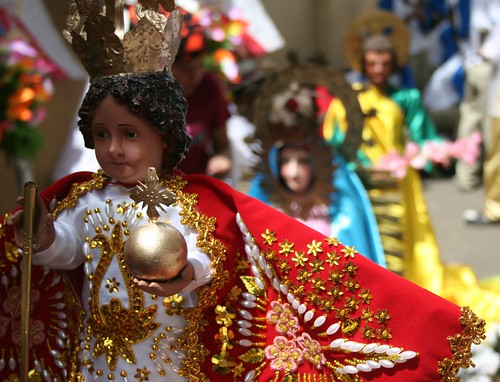
Canon EOS 350D, 1/640s, f/5.0, 44mm, ISO 100
An image of the Sto. Niño, at the Sinulog 2006 Grand Parade, Cebu City, the Philippines
The heat of the discourse turned up a notch when the subject of scientific analysis was debated on the floor by several teachers from the University of San Carlos whom my wife and I personally know. (I used to teach MS Chemistry there and my wife, who holds a PhD in Chemistry, still is a professor there). We have to bite our tongue when a colleague of the university ardently claimed that even if the Church allowed it, carbon dating cannot be an accurate verification of age. Hey, the image is only about 500 years old and there are safeguards to ensure the validity of the test! But we kept our silence. The discussion was getting nowhere anyway and we would not expect the Augustinian priests to submit the image for authenticity tests anytime soon.
the color of Sto. Niño de Cebu
That said, why do prewar pictures of the Sto Niño de Cebu show an image of a black child? Several antique statues of the Sto Niño also are black or brown. Old folks who grew up before the war still maintain that Cebuanos have always been venerating a black image hence their question, why is the image now fair? Was there a switch?
I love the explanation which followed! Sometime in the early 1800s, an Augustinian friar, presumbably of high rank, got depressed. In the absence of lithium or prozac pills, the priest vented out his melancholia by having the Sto Niño painted black. I asked later on why were there no records noting the sudden change from fair to black? Well, understandably, first-hand literature are just hard to find. Probably too, in a time when faith literally had to be blind, questioning a priest was not an option lest you be deemed heretic.
What is known is this. In the later part of World War II, the image fell from its niche, chipping an eye and scratching a cheek. Augustinian priests Pablo Alava and Leandro Moran took the image to the Redemptorist monastery for safekeeping. When a Belgian nun of St Theresa’s College wiped the image, part of the black paint came off revealing what the complexion was all along, to be fairly “white”. First person testimonies attest that after the war, Fr. Pablo asked renowned artist and lexicographer Dr. Rosario Trosdal to restore the image to its original flesh color. Dr. Trosdal, who also happened to be one of the privileged camareras or religious ladies-in-waiting of the holy image, personally narrated the events to Bhen Chua in his research in 2005. As a constant reminder of its “color” history, traces of black paint were left on the image’s forehead.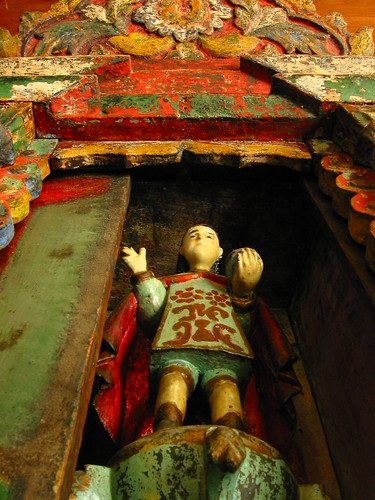
Canon PowerShot S40, 2.5s, f/8, 7.1mm
an 18th/19th century antique Sto. Niño from Bohol, part of my personal collection of devotional antiques in Cebu, the Philippines
While it would have been romantic to claim that in Cebu came a tradition of a black Sto. Nino, the legend of the black child came to stop.
Today, the original image, still sits in a chapel in the Basilica Minore del Sto. Niño, shielded by bullet-proof glass, but forever close in the heart of Cebuanos and the nation. Faith, after all, cannot be measured by the physical.
Next: Part 5
Here are more pictures of the Sinulog 2008 grand parade.

Canon EOS 350D, 1/400s, f/5.0, 160mm, ISO 100
the Tribu Kalimudan of Sultan Kudarat, at the Sinulog 2008 Grand Parade, Cebu City, the Philippines
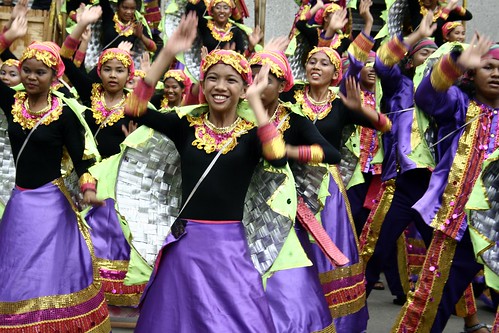
Canon EOS 350D, 1/160s, f/5.6, 52mm, ISO 100
the Tribu Kalimudan of Sultan Kudarat, at the Sinulog 2008 Grand Parade, Cebu City, the Philippines
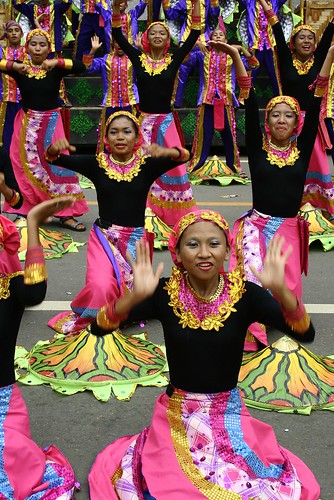
Canon EOS 350D, 1/250s, f/5.6, 28mm, ISO 100
the Tribu Kalimudan of Sultan Kudarat, at the Sinulog 2008 Grand Parade, Cebu City, the Philippines
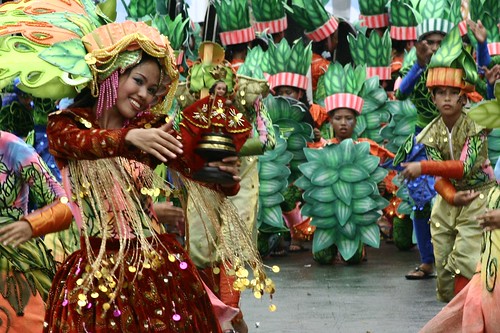
phototip: I like how the dancers’ faces follow a directional clockwise curve that eventually leads up to the girl hjolding the Sto Nino.
Canon EOS 350D, 1/400s, f/10, 135mm, ISO 800
Le Dionaldo, lead dancer of the contingent of the Hambabalud Festival of Jimalalud, Negros Oriental, doing their presentation at the Sinulog grand parade, Cebu City, the Philippines
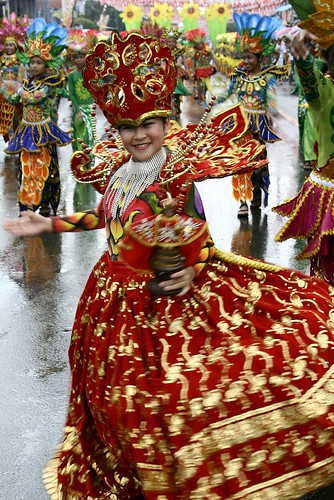
Canon EOS 350D, 1/30s, f/5.6, 35mm, ISO 100
the Tribu Pintaflores of San Carlos City, Negros Occidental, at the Sinulog 2008 Grand Parade, Cebu City, the Philippines

Canon EOS 350D, 1/30s, f/5.6, 37mm, ISO 100
the Tribu Pintaflores of San Carlos City, Negros Occidental, at the Sinulog 2008 Grand Parade, Cebu City, the Philippines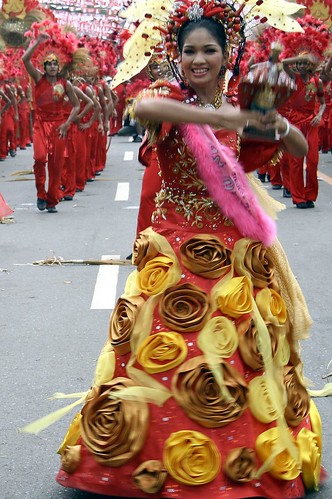
Canon EOS 350D, 1/100s, f/5.6, 43mm, ISO 100
Gloriane Solina of the Kaogma Festival of Camarines Sur, at the Sinulog 2008 Grand Parade, Cebu City, the Philippines






1 comment:
The carbon dating thing did also surprised me. hehe.
Hope we could be seat mates again farl and dia.
God bless!
Post a Comment